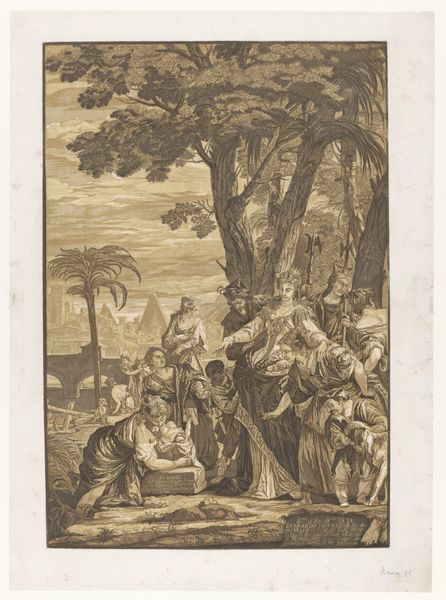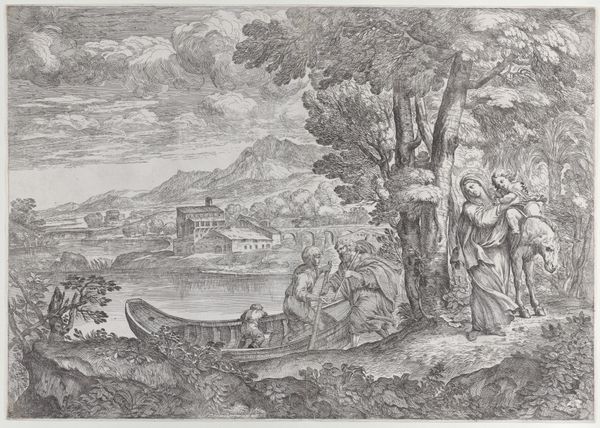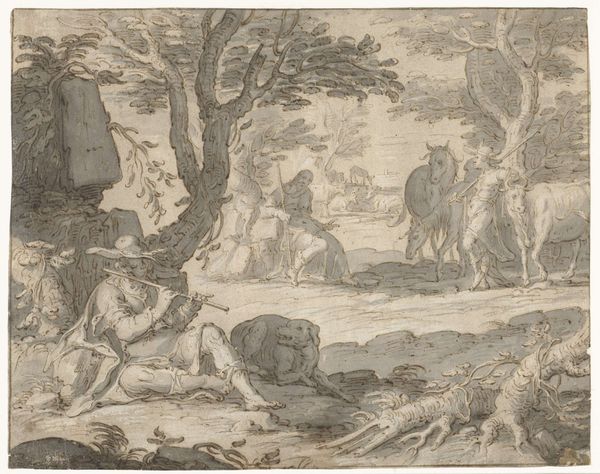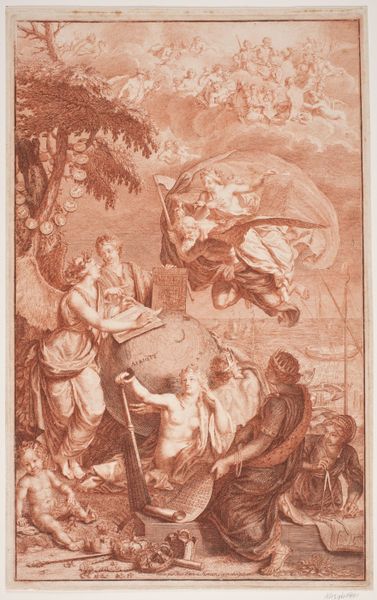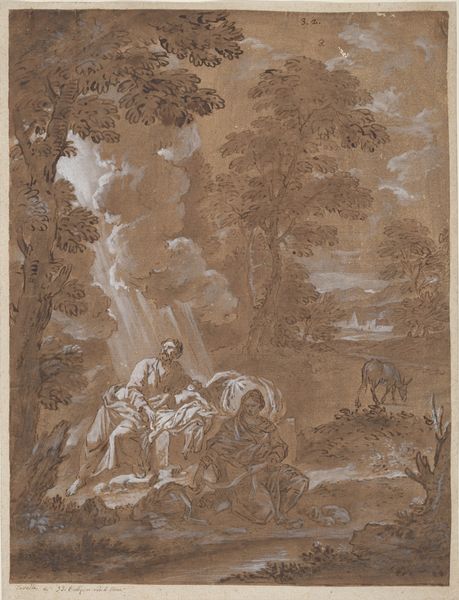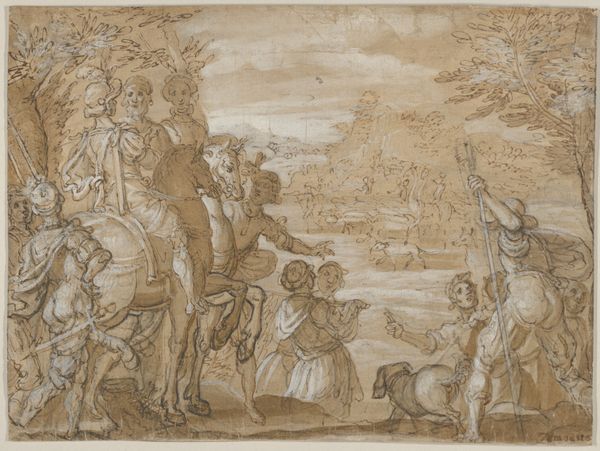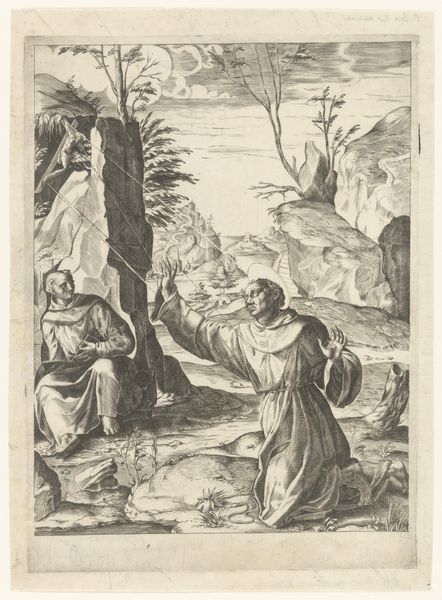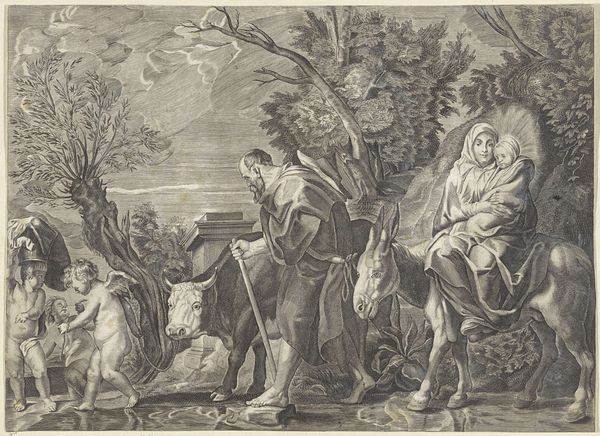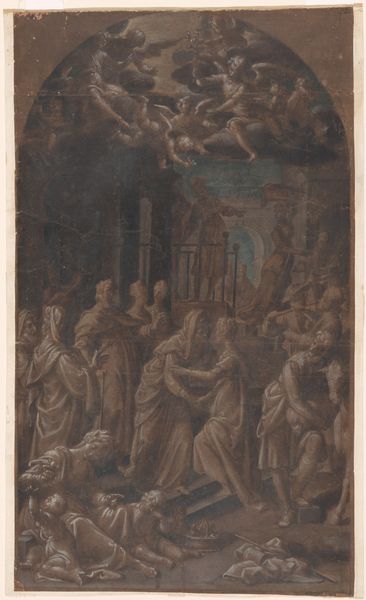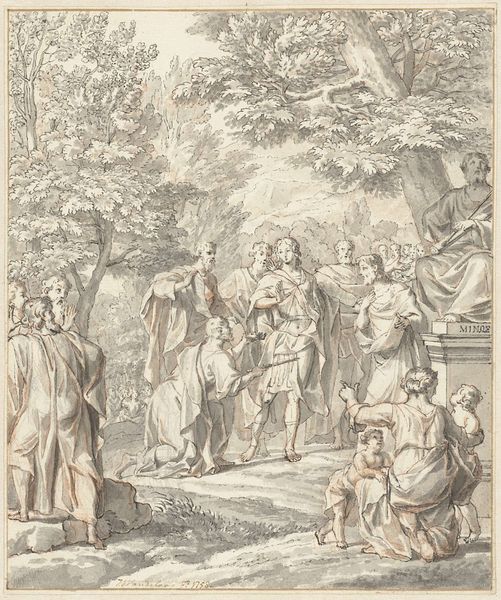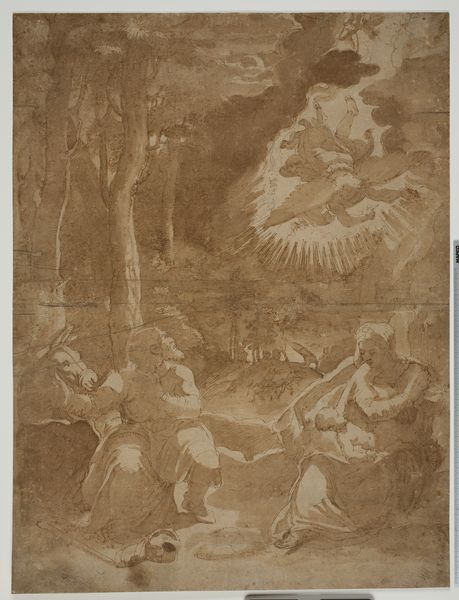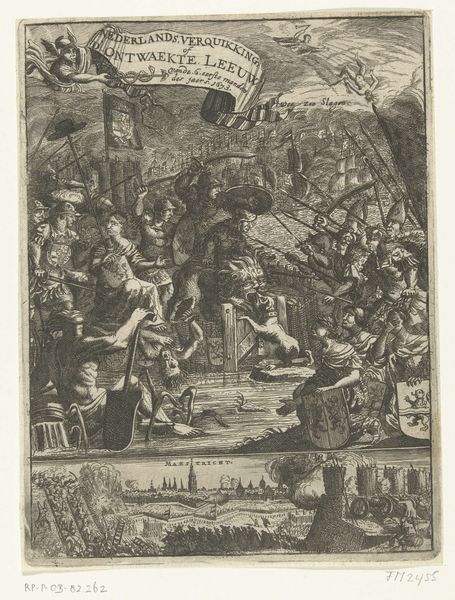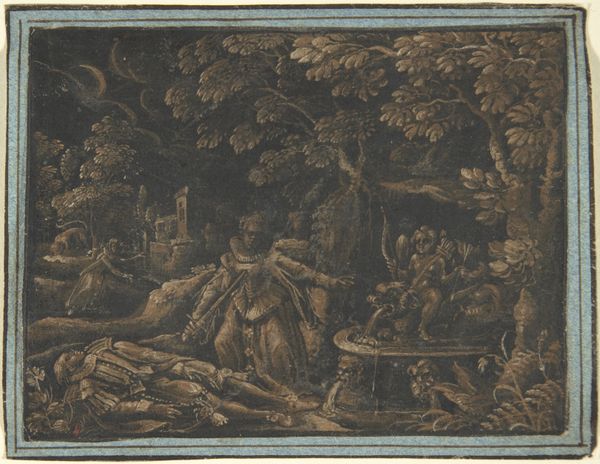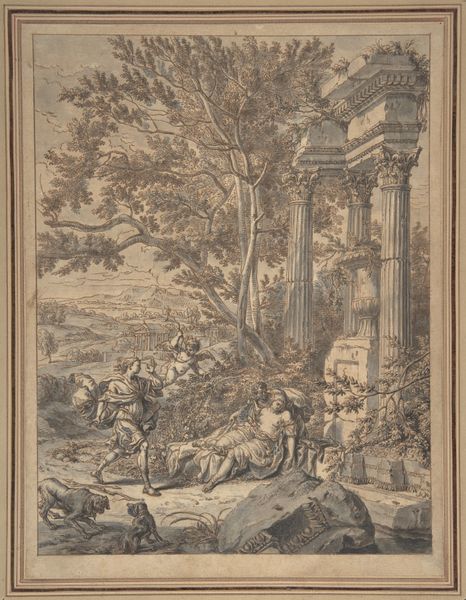
oil-paint, textile
#
water colours
#
narrative-art
#
baroque
#
oil-paint
#
landscape
#
textile
#
figuration
#
oil painting
#
genre-painting
Dimensions: height 337.5 cm, width 208.5 cm
Copyright: Rijks Museum: Open Domain
This tapestry, made by Urbanus Leyniers in Brussels in the late 17th or early 18th century, depicts a scene of fortune-telling. It provides a glimpse into the social dynamics and beliefs prevalent at the time. The image creates meaning through its depiction of everyday life, blending elements of classical landscape with contemporary social interactions. Brussels, a prominent center for tapestry production, saw workshops like Leyniers' thrive under the patronage of the aristocracy and bourgeoisie. These tapestries often reflected the values and interests of the patrons, serving both as decoration and as statements of social status. The presence of a fortune teller in the scene hints at the superstitions and anxieties of the era, reflecting a society grappling with uncertainty and seeking answers in the mystical. To truly understand this work, the historian consults archival records, workshop inventories, and patronage documents, revealing insights into the economic, social, and cultural forces that shaped its creation. The meaning of art is always contingent on its social and institutional context.
Comments
No comments
Be the first to comment and join the conversation on the ultimate creative platform.
